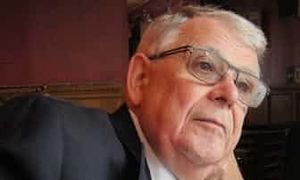Nigel Wylde
(officer, spook) | |
|---|---|
 | |
| Born | 16 March 1947 Rawalpindi, British Raj |
| Died | 21 March 2016 (Age 69) |
Cause of death | cancer |
| Nationality | British |
| Alma mater | Duke of York’s Royal Military school, Royal Military Academy Sandhurst |
| Interests | • 2006 transatlantic aircraft plot • Dublin and Monaghan bombings |
British officer spook who raised concerns about false flag attacks and wholesale surveillance | |
Nigel Wylde was a critic of the "war on terror".
Career
Commissioned into the Royal Army Ordnance Corps as an ammunition technical officer, he commanded the Belfast 321EOD unit in 1974 and was responsible for defusing more than 90 devices in three months, including a 350lb car bomb, for which he was awarded the Queen’s Gallantry Medal. However, he raised concerns about possible army involvement in a murder in County Armagh and resigned his post.[1]
He subsequently moved to military intelligence in a series of European postings, including two years with the Soviet forces in Potsdam, East Germany.[2]
He retired from the army in 1991 and took up a career in IT. The publication in 1998 of The Irish War, written by Tony Geraghty with assistance from Wylde, raised issues about the wholesale surveillance of the Ulster population. The book aroused the ire of the Ministry of Defence, and both Wylde and Geraghtywere charged under the Official Secrets Act for trafficking in classified information, even though the data was freely available in the public domain. [1]
Final years
Wylde completed a postgraduate diploma in law and continued to provide expert opinion, some of which conflicted with official views, contradicting the official narrative as regards the Dublin and Monaghan bombings before an Irish government subcommittee in 2004. He also disputed the effectiveness of liquid explosives in the 2006 transatlantic aircraft plot.[1]